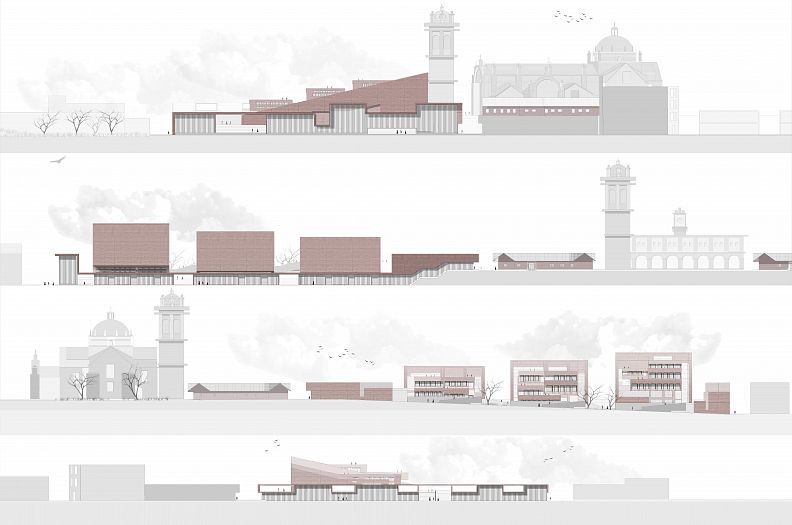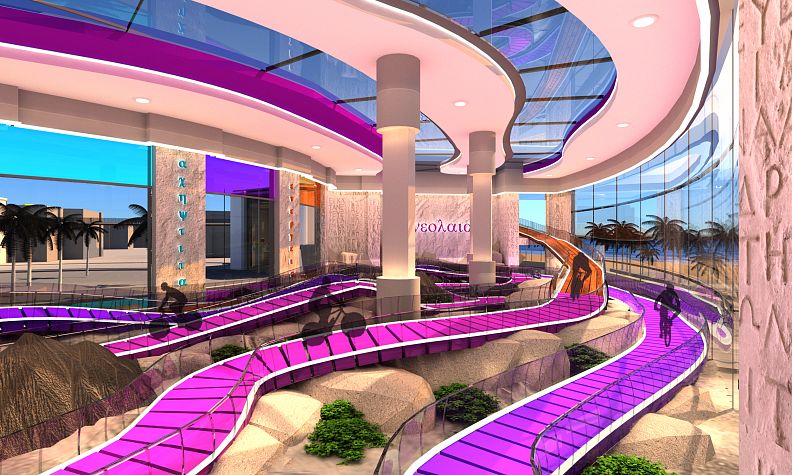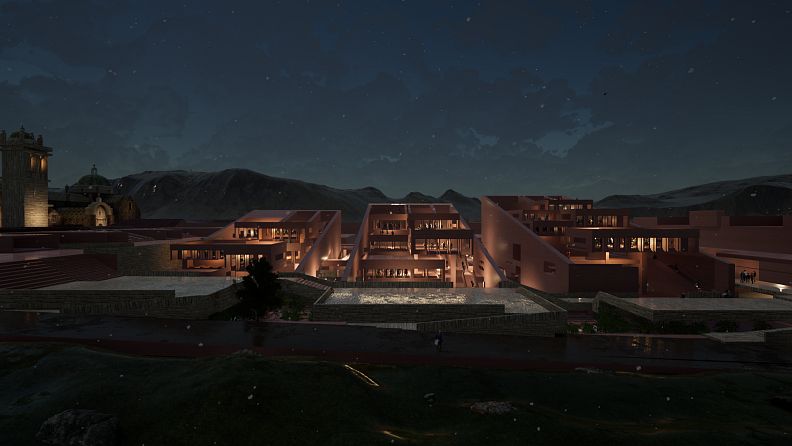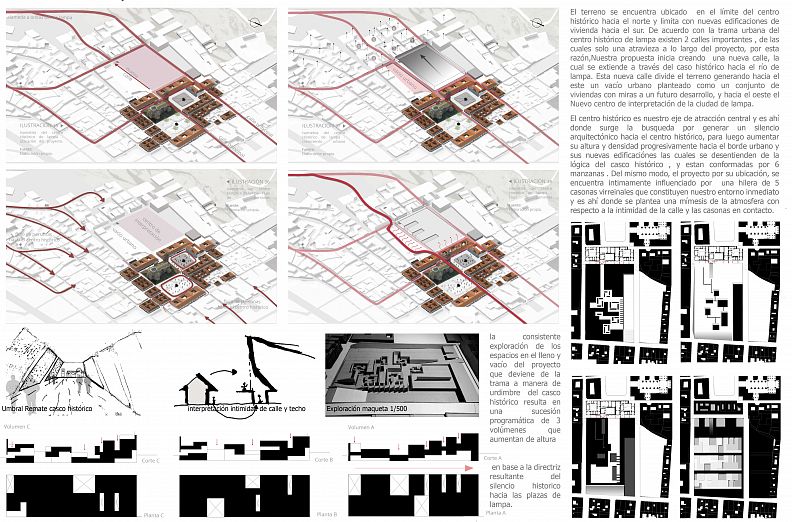Centro de Interpretación del patrimonio Cultural de Lampa

Project idea
The cultural and interpretative center Rumi Llanqha makes reference to the stone in the pink city, this natural and significant element as the Tinajani stone forest that surrounds Lampa with its voluminous monumentality. Being now represented as the main design strategy, this time to shield the historic center of Lampa from contemporary constructions that damage its historical composition, either by height, materiality or composition. It is from there the importance of the empty land that lies between a historical fabric and a contemporary one. Having a possibility for the project to be an edge for the contemporary fabric and on the side of the historic center to generate an architectural silence; with the continuity of the atmospheres of Lampa, this through the spaces of the project for which were used as compositional factors, the genetics of the mansions, the colonial street conditions, the route of catacombs and monumental buildings of Lampa.
Project description
the project is invisible towards the historic center; an imaginary line was projected that has as its origin the point of reference with the lowest visual angle of the main square, this is projected from the level of the roof of one of the 5 colonial houses that constitute our immediate environment. Resulting in a guideline that will build the height limit at the time of projecting the new interpretation center.
Technical information
Proyecto: Centro cultural e interpretativo del casco histórico de lampa
Autor: Christian Verde y Carlo Gonzales
Profesor Guía: Ricardo Huanqui y Carmen Ribas
Universidad de lima – Perú
























